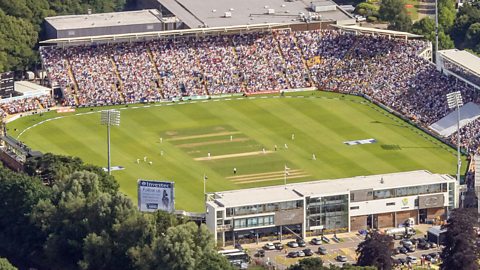Cricket player positions and playing area
Playing area

A cricket match is usually played on a large circular or oval-shaped grassy field. Although there are no fixed dimensions for the pitch, it is widely acknowledged that the diameter usually varies between 137 m (450 ft) and 150 m (500 ft).
Unlike most sports, cricket does not have a fixed-shape or size of a ground for professional games, and it can actually vary from being a perfect circle to an elongated oval.
In the middle of the cricket ground is a very well prepared surface that is known as the pitch. This closely mown area is the main focal point for all cricket matches and the type of pitch prepared can have an impact on the outcome of the match. Although the ground has no definite size, the pitch is very precise:
- Popping crease - a bowler must have part of their foot behind this line when the ball is delivered or the umpire will call 'no ball'.
- Bowling crease - in all competitive games of cricket the length of a pitch is 20.12 m (or, in imperial measurements, 1 chain or 22 yards) long and this is measured as the distance between the two bowling creases. The pitch is 3.05 m (10 ft) wide.
- Wicket - the two wickets are placed on each of the bowling creases and consist of three wooden stumps and two wooden bails. The bails are positioned on the stumps in grooves made along the top of each stump. The bails must be knocked off the stumps to bowl a batter out.
- Stumps - these each have their own name and when viewed from the front, the left stump is called the off stump, middle stump and the right stump is called the leg stump.
Players
A cricket team consists of 11 players per side and one team bats while the other fields. Unique to cricket, the captain of the fielding team has complete control of their team’s fielding positions. In all, there are 35 different fielding positions and the captain can utilise every one to try to stop the batter from scoring runs or to try to get them out.
The fielding positions are: